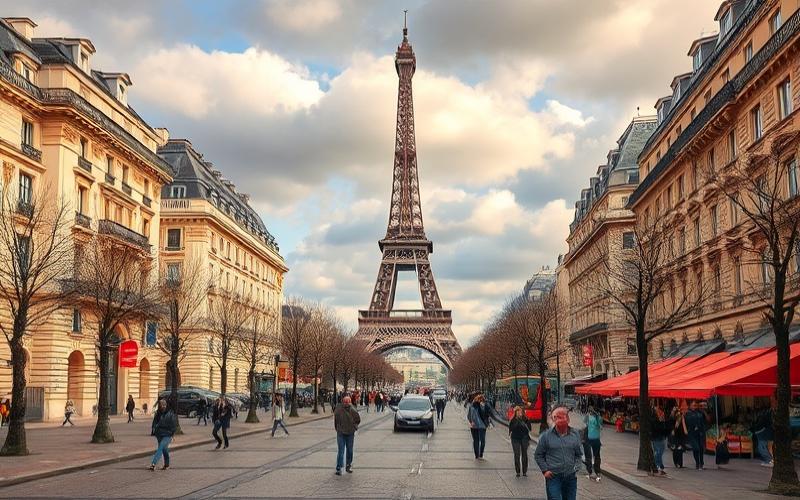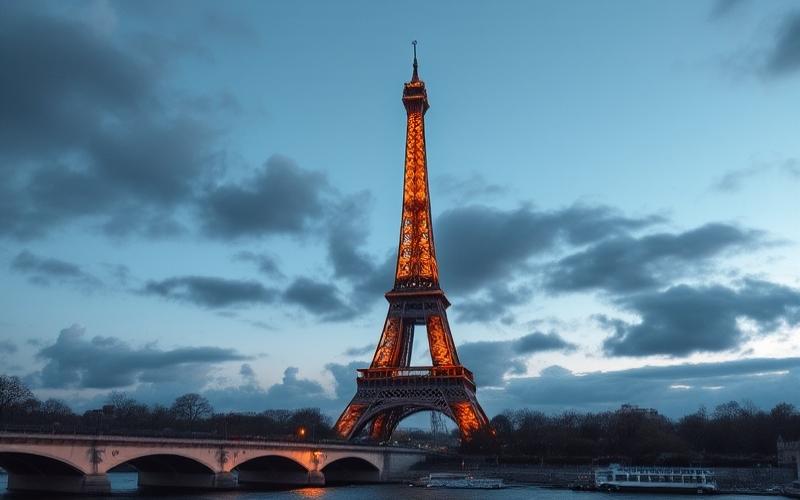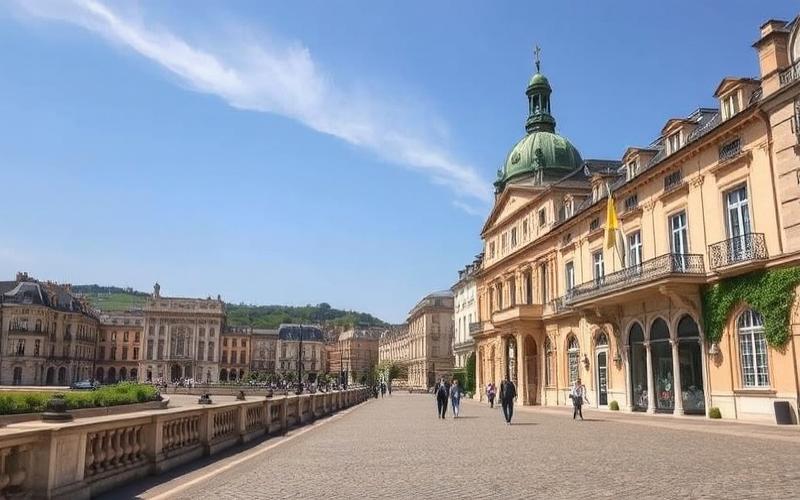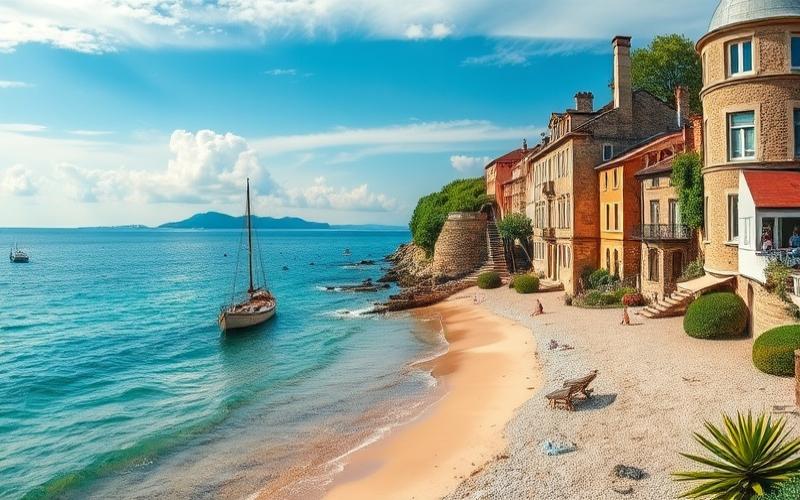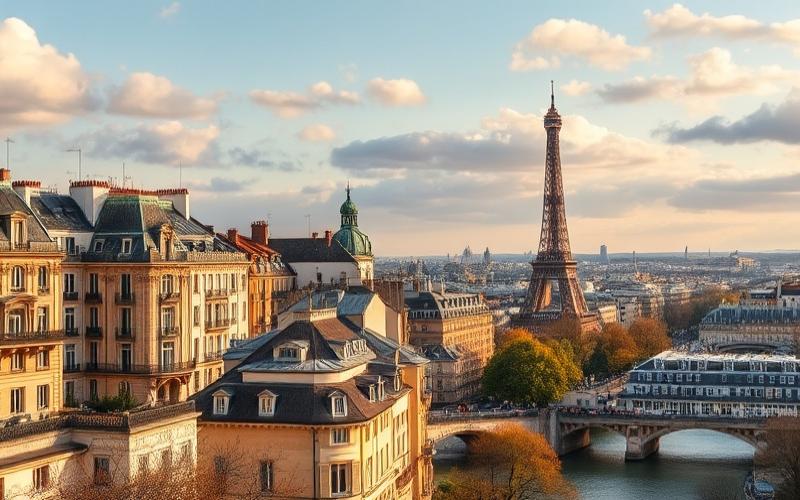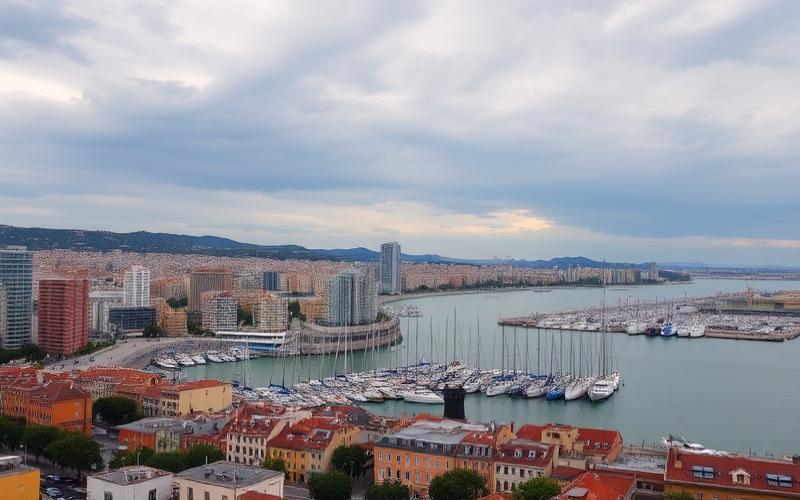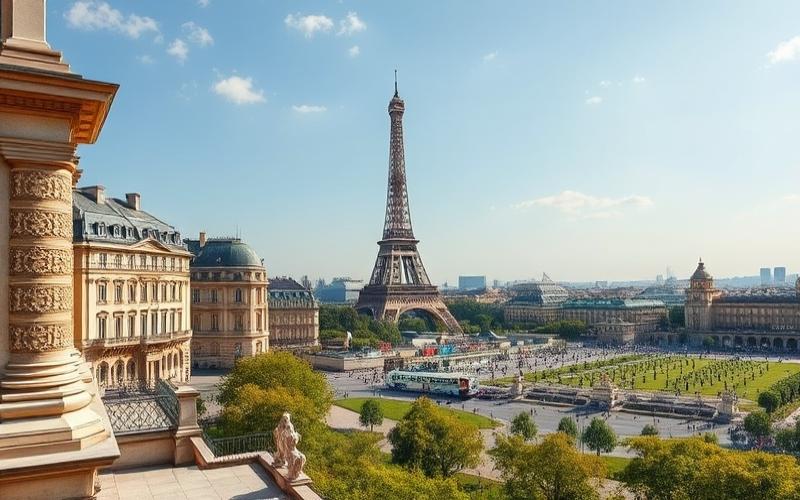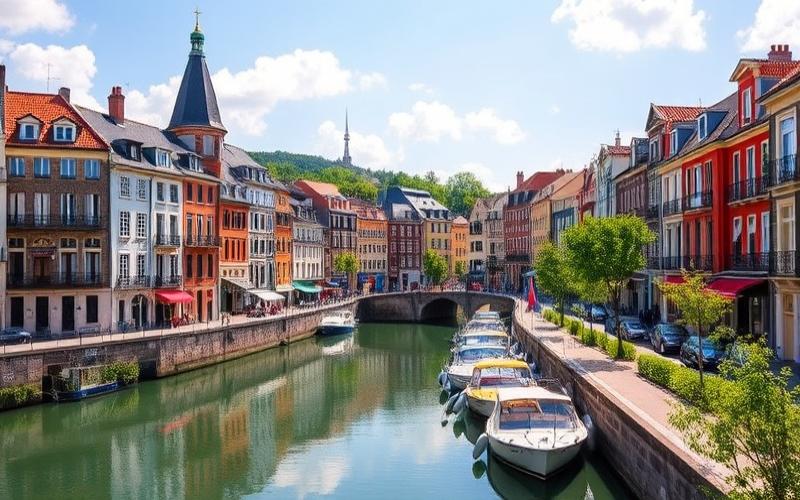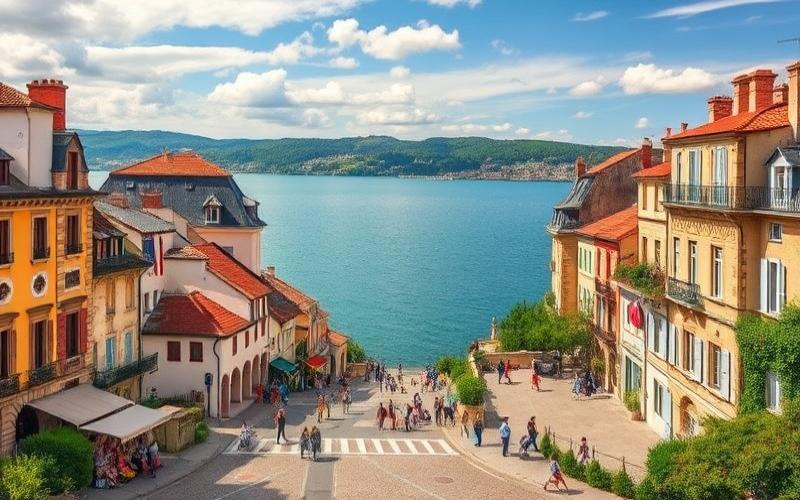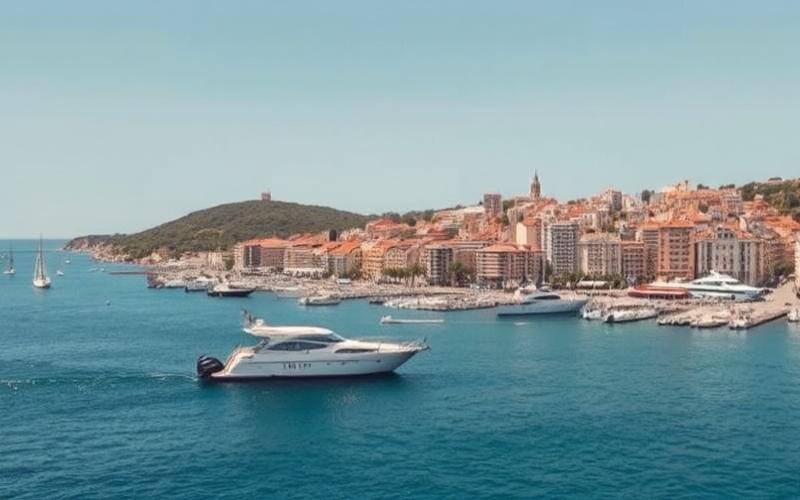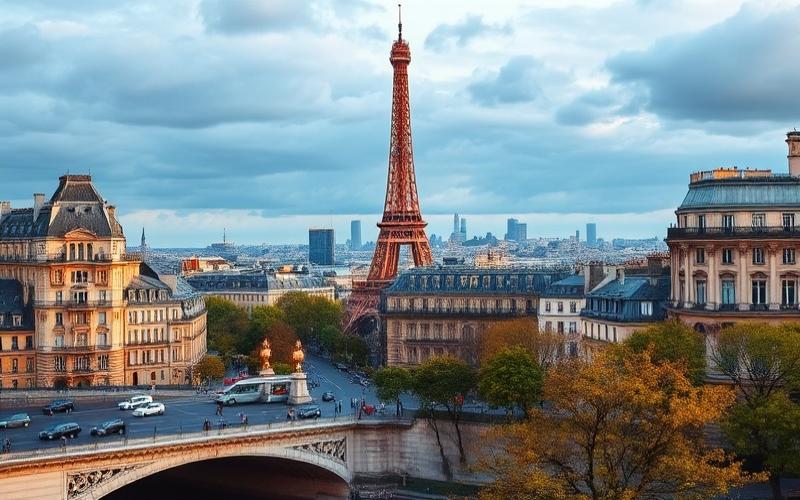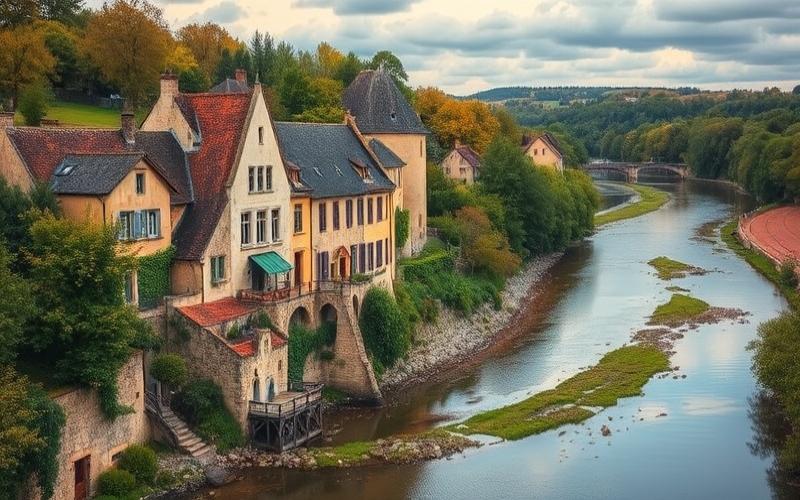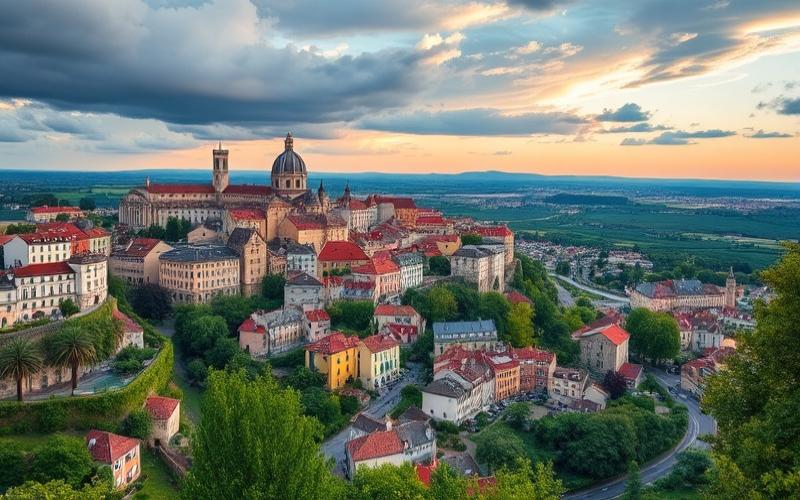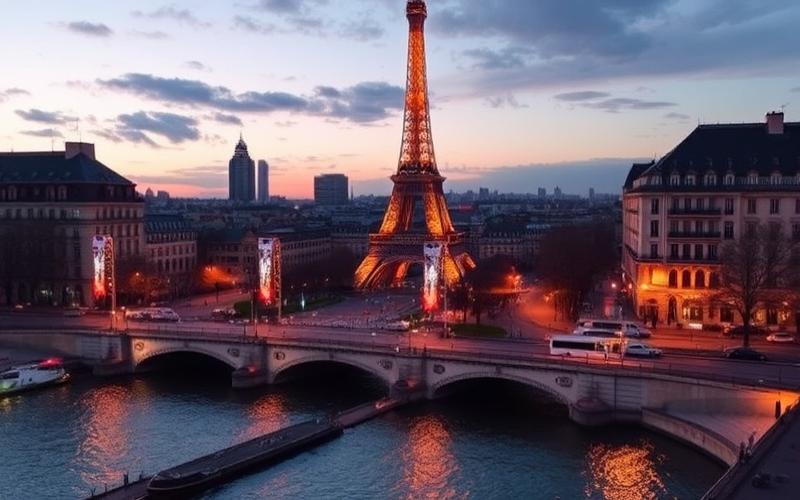
 Published on and written by Cyril Jarnias
Published on and written by Cyril Jarnias
Tourism plays a crucial role in the French economy and exerts considerable influence on the country’s real estate market. With its varied landscapes, rich cultural heritage, and renowned cuisine, France attracts millions of visitors from around the world each year. This tourist influx has significant repercussions on the real estate sector, shaping market trends and creating new opportunities for investors. In this article, we will explore in detail how tourism impacts the French real estate market, examining the most sought-after areas, effects on prices, and prospects for rental investment.
France’s Tourist Gems: Dream Destinations
France is filled with iconic tourist destinations that attract visitors from around the world. These high-traffic tourist areas significantly impact the local real estate market, creating increased demand for housing and stimulating investments.
Paris, the Eternal Favorite
The French capital remains undeniably the flagship destination for tourism in France. With its iconic monuments like the Eiffel Tower, the Louvre, and Notre-Dame, Paris attracts millions of visitors each year. This popularity is directly reflected in the Parisian real estate market, which remains one of the most dynamic and expensive in the country.
The French Riviera, Mediterranean Jewel
The French Riviera, with its prestigious seaside resorts like Nice, Cannes, and Saint-Tropez, is another region heavily impacted by tourism. The demand for second homes and seasonal rentals is particularly high there, significantly influencing local real estate prices.
Alpine Ski Resorts, Investors’ White Paradise
The French Alps, with renowned resorts like Chamonix, Val d’Isère, or Courchevel, attract many tourists in winter. This marked seasonality has a significant impact on the real estate market in these regions, with strong demand for ski chalets and apartments.
The Loire Valley Castles, Between History and Investment
The Loire Valley castle region, with its architectural gems and historical heritage, attracts numerous visitors. This tourist influx stimulates the local real estate market, particularly for character properties and rural vacation rentals.
Good to Know:
The most popular tourist areas in France generally experience strong pressure on the real estate market, with higher prices and sustained demand for seasonal rentals.
The Price Waltz: When Tourism Drives Up Square Footage Costs
The impact of tourism on real estate prices in France is undeniable. In the most sought-after tourist areas, price inflation is often observed, both for purchases and rentals.
Upward Pressure in Tourist Areas
In heavily touristic regions, the increased demand for housing, whether for second homes or seasonal rentals, exerts upward pressure on prices. For example, in Paris, the average price per square foot reaches peaks, exceeding 10,000 euros in some districts. On the French Riviera, prices can range between 6,000 and 9,000 euros per square foot in Nice.
Significant Price Differences Between Tourist and Non-Tourist Areas
Significant price differences are often observed between heavily touristic areas and less frequented regions. For example, while the average price per square foot in Paris can exceed 10,000 euros, it’s possible to find properties for less than 2,000 euros per square foot in some less touristic medium-sized cities.
Seasonal Effect on Rental Prices
In seasonal tourist destinations, like seaside or ski resorts, rental prices can experience significant variations depending on the time of year. During high season, rates can double, or even triple, compared to low season.
Impact on Local Residents’ Real Estate Purchasing Power
Price increases linked to tourism can have consequences on local residents’ real estate purchasing power. In some highly sought-after areas, like Paris or the French Riviera, access to property ownership becomes increasingly difficult for inhabitants, sometimes creating tensions in the housing market.
Good to Know:
The impact of tourism on real estate prices varies considerably by region. It’s important to thoroughly study the local market before investing, taking into account seasonal variations and long-term trends.
Tourist Rental Investment: A Golden Opportunity?
Tourism offers numerous opportunities for rental investment in France. Seasonal rentals, in particular, have become an attractive option for many investors.
The Seasonal Rental Boom
In recent years, seasonal rentals have experienced real growth in France, particularly thanks to the emergence of platforms like Airbnb. According to statistics, the number of tourist furnished rentals has increased from 300,000 in 2016 to about 1 million today. This rapid growth demonstrates the appeal of this type of investment.
Potentially High Returns
Investment in seasonal rentals can offer attractive returns, particularly in popular tourist areas. For example, in Paris, the capitalization rate for seasonal rentals can reach 6.5%, while in Nice, it can go up to 7.5%. These figures are often higher than those for traditional long-term rentals.
Geographic Diversification of Investments
Investors have an abundance of choices in terms of destinations for their tourist rental investments. From major cities like Paris, Lyon, or Bordeaux to seaside resorts like Biarritz or La Rochelle, and Alpine ski resorts, each region offers unique opportunities with its own market characteristics.
Challenges of Tourist Rental Management
Although potentially profitable, investment in seasonal rentals also comes with its challenges. Management can be more intensive than for long-term rentals, with frequent tenant changes, more regular maintenance, and a need to adapt to seasonal demand fluctuations.
Evolving Regulations
It’s important to note that regulations concerning seasonal rentals are constantly evolving in France. Many cities, particularly Paris, have implemented restrictions to limit the impact of this type of rental on the local housing market. Investors must stay informed of these regulatory changes to adapt their strategies.
Good to Know:
Tourist rental investment can offer attractive returns but requires good knowledge of the local market and active management. It’s crucial to thoroughly study current regulations and long-term prospects before getting started.
Future Outlook: Between Opportunities and Challenges
The future of the tourist real estate market in France appears both promising and complex. Several trends are emerging, offering new opportunities while posing new challenges.
Post-Pandemic Recovery
After the disruptions caused by the COVID-19 pandemic, the French tourism sector is showing encouraging signs of recovery. This revival should have a positive impact on the real estate market in tourist areas, with a possible increase in demand and prices.
Evolution of Traveler Preferences
An evolution in traveler preferences is being observed, with growing demand for authentic experiences and unique accommodations. This trend could favor investment in character properties or atypical rentals, offering new opportunities for creative investors.
The Sustainability Challenge
Growing environmental awareness is increasingly influencing traveler choices and local policies. Investors will need to increasingly consider sustainability criteria in their tourist real estate projects, whether in terms of energy efficiency or environmental impact.
Digitalization of the Sector
The ongoing digitalization of the tourism sector, with the rise of online booking platforms and automated management tools, offers new opportunities to optimize the management of seasonal rentals. Investors who can leverage these technologies could potentially improve their profitability.
Regulatory Challenges
The evolution of regulations, particularly concerning seasonal rentals, remains a major issue for investors. It’s likely that new measures will be implemented in the coming years to regulate this market, which could impact investment strategies.
Good to Know:
The future of the tourist real estate market in France offers many opportunities but requires constant monitoring of market trends and regulatory evolution. Investors will need to demonstrate adaptability and innovation to succeed in this constantly evolving sector.
In conclusion, the impact of tourism on the French real estate market is undeniable and multifaceted. From sought-after tourist areas to effects on prices, and including rental investment opportunities, tourism profoundly shapes the real estate landscape of France. Although this market offers many opportunities, it also comes with its challenges, particularly in terms of management and regulation.
For investors, the key to success lies in a thorough understanding of local dynamics, constant monitoring of market trends, and an ability to adapt to regulatory developments. With a strategic and well-informed approach, real estate investment in the tourism sector in France can prove to be an attractive option for diversifying and optimizing one’s assets.
Disclaimer: The information provided on this website is for informational purposes only and does not constitute financial, legal, or professional advice. We encourage you to consult qualified experts before making any investment, real estate, or expatriation decisions. Although we strive to maintain up-to-date and accurate information, we do not guarantee the completeness, accuracy, or timeliness of the proposed content. As investment and expatriation involve risks, we disclaim any liability for potential losses or damages arising from the use of this site. Your use of this site confirms your acceptance of these terms and your understanding of the associated risks.

